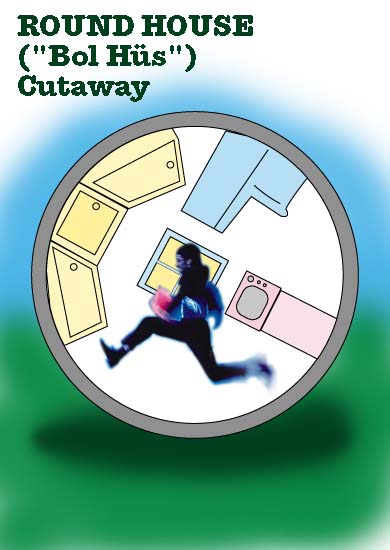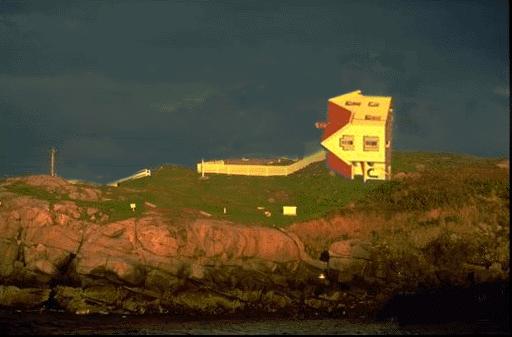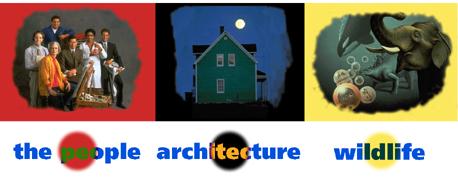
Tha architecture on Stomgrog reflects the unique character and requirements
of the population.
The famous Swedish architect Annette Inte
said "The nature of the constantly moving island has marked it's people
in an almost metaphysical sense. The sense of your home being where you
are, rather than being a specific grid reference runs through the soul of
the islanders. Things such as class, breeding and where you come from, mean
little. Social heirarchy is stripped down to where you are and what you
are...spiritually the islanders live and even welcome the flux and intransigence
of daily existence. It doesn't matter where I bob and flow, at the will
of the sea I am adrift on. Because where am I? I'm here. Tomorrow I will
still be here. My here is always constant. I am always in the centre of
it."
Inte has spent many years on the island and has designed the phenomenally
successful "Bol Hus" ("Round House" in English)
which is the Stomgrog equivalent of the bedsit. Made of state-of-the-art
low weight, high strength materials, the Round House is a perfect sphere.
All furniture and fittings are attached to the inside walls so that the
optimum floor space is released for the occupant. As he moves around the
room, his weight rolls the room around like a mill. The floor becomes the
walls and ceiling as the occupants weight (which is the single heaviest
object in the structure) moves to different areas. In this way floorspace
can be more than quadrupled comparative to the space available.
Bol Hus communities are similar to mobile home sites in that they grow and
shrink dependant on whether the inhabitants wish to move on. Normally Bol
Hus dwellers will anchor their homes when settling for any length of time
as the normal movement of everyday habitation could leave a Hus dweller
in a very different location than where he intended to settle. Also groups
of Bol Hus's tend to accumulate at the bottom of hills leading to the term
"Bol valley slum".

Another famous feature of Stomgrogian Architecture is the 'Sideways
House', a building which appears to be laid on its side. The original,
built in 1962 by Herve Moutard was intended as a playful architectural folly
but was widely copied and soon became a reasonably common building type,
partly due to the discovery that if placed with the tiled roof facing the
sea it very successfully buffeted the high winds that Stomgrog can be plagued
by.

the original Sideways House (b.1962)
tap on a window for a glimpse inside
the house
Several other variations on the same theme were also designed and built
but did not enjoy the same success. The upside House for instance, proved
problematic with a propensity for the roof flooding. After several deaths
from falls from the first story front door it was declared unsafe and discontinued.





